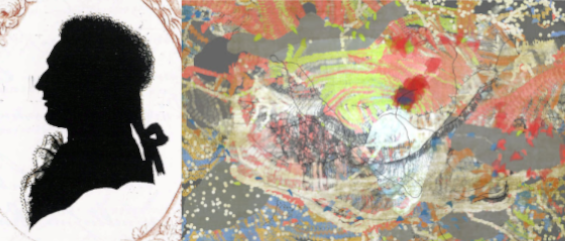Camille Utterback is from Bloomington, Indiana and attend Williams College for undergrad and NYU for a master’s within the school of art. She is known as an interactive installation artist, and has worked as a contractor for many art exhibits.
Camille Utterback’s piece, “Precarious”, utilizes a ceiling mounted camera with KinectV2 camera tracking to draw silhouettes on a backlit screen. Her work was created for and installed in the National Portrait Gallery exhibition Black Out:Silhouettes Then and Now that opened on May 18, 2018. The Gallery and Raphael Palefsky-Smith, developer of the cameras, helped Utterback create this work of art.
Precarious was built on the algorithmically generated visual language that she has spent many years refining with her custom coded interactive drawing system. While not much is spoken about her custom software it creates very cool and interactive artwork for others to enjoy. This piece, specifically, does more than just trace those who visit the installation on the backlit screen. As people play with the piece more and more they realize that when more than one person is present each person can alter the other’s silhouette by pushing it and manipulating it with their own outline. Additionally, past outlines erase after one leaves and others join.
I found this to be a funky and inspiring way to represent history as it both represents and deviates from the popularity of silhouettes back in the day. While silhouettes were a form of art, they generally only had one person in the frame. This piece makes that impossible, but aligns with how important relationships are versus back then, as in more and more people care about each other and the future of the World.
Here’s a video representation of the piece:
You can check out a more complete story on the piece here:
![[OLD FALL 2020] 15-104 • Introduction to Computing for Creative Practice](wp-content/uploads/2021/09/stop-banner.png)
